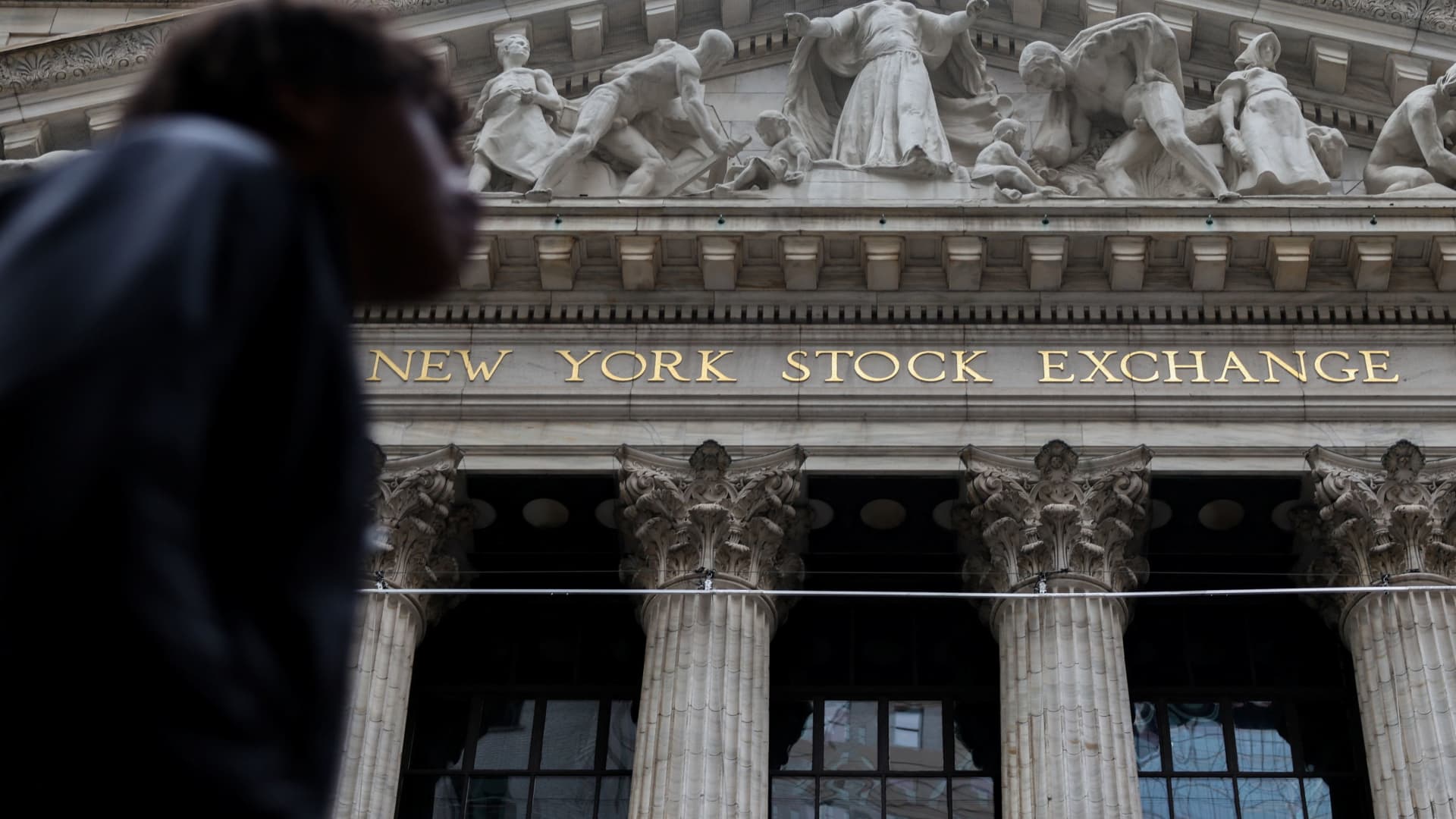The stock market is starting to act like the worst of the tariff disputes is over, but investors may want to wait to see if the economy avoids recession before jumping back on the bull market bandwagon, according to Goldman Sachs. The S & P 500 has risen for six straight trading sessions and is now down less than 1% in April, erasing almost all its losses from immediately after the “Liberation Day” tariff rollout. From the March 31 close to the April 7 intraday low, the S & P 500 was briefly down 13.8% in less than five trading days. Now Goldman Sachs macro strategist Vickie Chang says in a note to clients that the market may be following a pattern where less headline risk marks the bottom in the market — rather than an economic low point — but that there are still reasons to be skeptical. “In past equity corrections, markets tended to bottom near the trough in economic activity. But if there was a clear cause of the weakness, it was enough for the market to see the peak in pressure from that source to conclude that activity would bottom soon, and for equities to trough ahead of that,” Chang said. “Despite that possibility, we still think there is significant vulnerability in a recession scenario, even if the worst of the underlying ‘shock’ has passed,” Chang added. The impact of higher tariffs has barely started to show up in hard economic data, but the contraction in first-quarter GDP reported on Wednesday suggests that the economy was already weakening before the April 2 tariff announcement. A private payrolls report from ADP also showed a slowdown in April hiring, a reminder that the unemployment rate can rise to match previous recessions. “Continued market recovery from here means putting an increasing weight on the belief that recessionary dynamics will not take hold, and requires confidence in the market’s ability to look through what is likely to be a further weakening in the data,” Chang said. Another reason to be skeptical is that the S & P 500’s peak-to-trough drop of 19% this year is relatively benign by historical standards. There have been five deeper drawdowns since 1950 even in non-recessionary periods, according to Goldman, while the average decline in the past three recessions was 47%.





